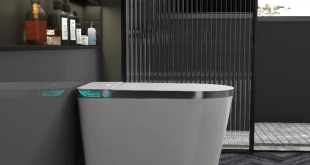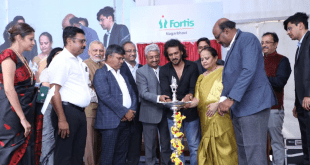
As the world emerges from the pandemic, there is a new set of technologies that are powering the world of experiences. Holograms suddenly seem to have caught on the interest of almost every sector – either for portraying as experiences or for more complicated business cases such as digital twins, R&D, simulation, or even architecture. India seems to be leading the trend in this area as we notice widespread adoption of this futuristic technology.
It is a technology segment that seems to portray experiences as being beyond virtual reality, augmented reality, or mixed reality. How the trend catches on is to be seen but the start is definitely exciting. The sudden shift seems to be powered by companies that have been focusing on building these experiences – specially using innovative technologies to create 3D holograms. Not to be confused with prisms, hologram fans – these companies are building actual holograms in thin air.
3D holograms use the property of bending of light rays effectively to create interactive and virtual objects, people, and spaces – in thin air. While small-size holograms have been experimented with earlier, we see a new trend in the larger-size holograms that are being offered by some of the niche companies in this sector. The programmability is an aspect that makes these holograms powerful as they are no longer just showcases for statues and objects.
We are seeing the Real Estate sector starting to use 3D holograms to provide immersive and interactive walkthroughs to their potential customers. The clients get a realistic view of what’s coming up in the property, or even their apartments. The landscaping, the buildings, and the amenities are all seen as holograms. The entire family can now see the upcoming property by the builder – all standing together in the holographic rooms. There is finally the ability for you and your spouse to stand together and experience the view from the 16th-floor balcony -exactly how it would be rather than just how the builder wants to show it.
Tourism is getting a special boost by utilizing 3D holograms in being able to display tourist attractions and provide virtual holographic tours of these places to create interest for the tourists. Tourist information centres create awareness of various attractions through the effective use of this technology. Some centres themselves create holograms to give a virtual view of the possibilities – enhancing tourist interest in the venues. Museums are not to be left far behind. A museum could earlier only showcase about 10 to 20% of their artefacts. Today, using holograms and concepts such as photogrammetry, they are able to create holographic exhibitions to show rare and precious artefacts to visitors in an interesting and innovative way. We found the Museum of Art and Photography in Bangalore, India to be leveraging these 3D holograms extensively and the use cases are most amazing.
Geospatial technologies such as lidar scans are for the first time viewable on the hologram display devices. We are able to see hologram-enabled lidar solutions being created to power the control centers of cities of the future – right here in India. Lidar scans are capturing cities and terrains in 3D and always had a limitation of not being able to get displayed in a relevant format. This problem has been overcome by the availability of large size 3 holographic displays and the advancement of technology and solutions in this space. The programmable interactivity makes this technology even more relevant for lidar scans in the days to come.
The education sector in itself is getting ready to transform as we see the use of holograms. Brilliant teachers can now be converted into a 3D hologram and effectively deliver classes simultaneously in any part of the country or even the world. complex lessons can be explained easily 2 students using the 3D holograms to illustrate the subject better. History can be made even more exciting by immersing the students in the past and taking them to the historical structures to give a lesson that would otherwise have to be taught through photographs and text only. We see a trend of aspirational schools leveraging this technology even further to give their students an edge in the future.
Corporates and the government sector are not to be left far behind. Almost every new experience center is beginning to ask for use of holograms to be part of their experience – be it a revamp or a completely new setup. This is because people of all age groups, professions, and sectors can see a very visible benefit in using 3D holograms to communicate their messages much better. there is also the advantage of using this futuristic technology as it is found exciting by the viewers.
With the advent of metaverse and NFTs powering the future, It is obvious that virtualization and holograms will be seen and used even more. The world of gaming is not to be left behind. In fact, it perhaps could become one of the earliest and biggest adopters of this new technology. And it is no secret about how big and influential this sector can be in powering the popularity of holograms across the other areas. It was interesting for us to see Holozone – an entertainment and gaming center-based purely on 3D holograms – at the Bangalore International Airport. The center provides a variety of 3D holographic games and experiences and is already extremely popular with reviews from visitors. We found the House of Toys – a new age toy store chain that recently opened up one of its first stores in Bangalore – experimenting with the setup of Holozone – as a holographic experience zone for the children and families while they shop for toys and games.
In fact, a Bangalore-based startup – OpEzee – has been creating and providing holograms in partnership with Euclideon Holographics from Australia. Their creative teams are powering experiences for their customers across sectors and building these right from here in India for the rest of the world. Some of the use cases include real estate walkthroughs for large and small clients, building smart interactive and immersive museum experiences, creating digital personas with interactive skills powered by the holograms, and displaying very accurate and intricate lidar data on holographic displays, using holograms for education and many more use cases. The company has invested in a hologram experience center right in the heart of town to be able to display the possibilities to their prospects.
Holograms definitely seem to be ready to power the trend of experiences in the future and the possibilities are very realistic in this totally virtual and innovative space.
 Newspatrolling.com News cum Content Syndication Portal Online
Newspatrolling.com News cum Content Syndication Portal Online






